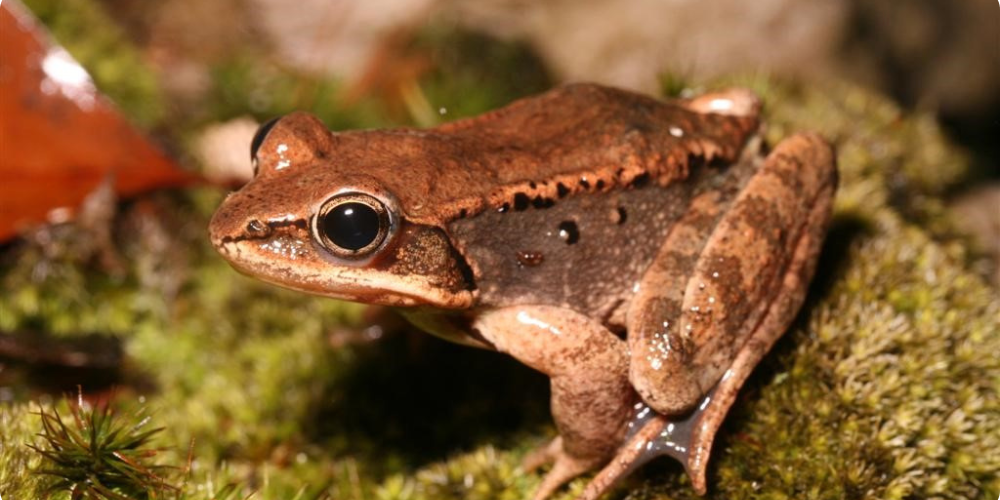
Shared with permission from the DCNR Bureau of Forestry’s Forest Fridays archive.
As days begin to lengthen and thoughts turn to spring, one of the earliest signs of the forest reawakening are the sights and sounds around vernal pools. Vernal pools appear as small dry depressions and damp spots in the forest in August and September, but slowly fill with fall rains and winter snow, setting the stage in late winter and early spring for an often raucous “pool party”.
Like a teenager waiting in line for tickets to a concert, the marbled salamander (Ambystoma opacum) actually arrives at vernal pools in the fall, often before the pools begin to refill with rainwater. This gives their larvae a head start to grow over the winter before the other amphibians move to pools in late winter. It also means they are large enough to eat the newly hatched larvae of other salamanders and frogs, as well as vernal pool invertebrates.


In late winter, a relatively “warm” rainy night (temperatures above 40 F° or so) can trigger the first round of salamander migrations, starting with the Jefferson salamander. It’s not uncommon to find Jefferson salamanders crawling over snow, ice and frozen ground toward the nearest vernal pool.

Over the next several weeks they will be followed by waves of migrating amphibians, including spotted salamanders, spring peepers, wood frogs, gray tree frogs, western chorus frogs, cricket frogs, pickerel frogs, northern leopard frogs, green frogs, spade foot toads, American toads and even bullfrogs! A large vernal pool may become the temporary home to thousands of breeding salamanders and frogs for several weeks, with the resulting din of calling frogs and toads almost deafening (link to a very loud “chorus” from a NY vernal pool: https://www.youtube.com/watch?v=5UfRr52_7s4 ). By late April, the only sign of the wild party is hundreds of egg masses, quietly developing and getting ready to hatch out.






Once the party is over, the adult salamanders and frogs will melt back into the surrounding forests, though most don’t move more that a few hundred yards from the vernal pools they were born in. This makes the management and protection of the uplands around these pools just as important as the pools themselves.

If you can get out in the woods the next couple of weeks, head out to a nearby vernal pool and look and listen to Nature’s “rock concert” while the spring party is in full swing!
For more on vernal pool animals, ecology, conservation and education, go the Pennsylvania Natural Heritage Programs Vernal Pool page: https://www.naturalheritage.state.pa.us/VernalPools.aspx